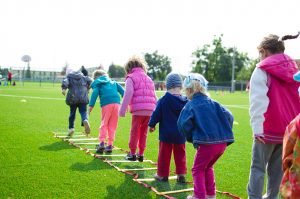Goals

Brief description of the issue
It is sometimes difficult to see how much activities programming can contribute to reinforce gender stereotypes and inequalities between boys and girls. This tool allows your work team to list the school’s activities, to whom they are intended and who is taking part into them.
The same way we reproduce gender stereotypes by our words, gestures and behaviours with students, the extracurricular activities and choices of activities we decide to organize can also be tainted by gender stereotypes. To assess if our activities programming benefits to girls and boys alike, we have to do a gender-based analysis and then we need to question ourselves on the measures we have to put in place to bring back a balance between boys and girls if it’s not already the case.
Gender-based analysis+ (GBA+)
Status of Women Canada has made accessible many resources on what GBA+ is and how we can apply this analytical process to our work. According to SWC, “GBA+ is an analytical process used to assess how diverse groups of women, men and non-binary people may experience policies, programs and initiatives. The ‘plus’ in GBA+ acknowledges that GBA goes beyond biological (sex) and socio-cultural (gender) differences. We all have multiple identity factors that intersect to make us who we are; GBA+ also considers many other identity factors, like race, ethnicity, religion, age, and mental or physical disability.” An online course is also available for free.
The tools we are offering here are adapted to a school context and are only focusing on gender, but you can totally adapt it to target different audiences, such as lower-income students, students with disability, etc.
Extracurricular activities
The assessment of the participation rate to extracurricular activities can reveal many things, particularly if GBA is integrated to this analysis. One analysis conducted at the high school level by the Ministère de l’Éducation of Quebec, for example, revealed some differences between boys and girls in terms of the proportion of each group participating in some activities (quantitative aspect) and of the types of activities they were engaging in (qualitative aspect). It is on those two aspects that we must focus when we assess our extracurricular activities. The following assessment grid can help you conduct a quick assessment of the participation of students to the activities.
| Activity | Traditionally M or F? | Number of girls | Number of boys |
|---|---|---|---|
| Basketball | M | ||
| Soccer | M | ||
| Computer science | M | ||
| Environmental committee | F | ||
| Student parliament | M | ||
| Dancing | F | ||
| Etc. |
Once this count has been completed, it is important to ask students about their interests, which activities they choose to participate in or not and why. Here is a list of questions that could be integrated to a survey to which all students of the school would have to answer:
- Amongst the activities offered at the school…
- Which ones do you participate in?
- Which ones would you like to participate in?
- Which ones are not interesting to you?
- Why aren’t you participating in some activities that are offered at the school and that you are interested in?
- Lack of time
- No transportation offered
- No male/female team
- Another activity happens at the same time
- Participation cost too high
- Etc.
- Which activities should be offered at the school?
- Are there activities you used to participate in before and not now?
- Which one(s)?
- Why?
Activities proposed should allow boys and girls to participate in them equally. Not only is the type of activity important (some activities that are perceived to be gender-neutral, such as circus, soccer, capoeira, etc., should be proposed), but also the way they are advertised. For example, a poster for a dancing activity that only shows girls or female characters and that uses traditionally female colors such as pink and purple is less susceptible to show boys that they would be welcomed to this activity. We can also encourage children’s participation to an activity perceived as being for the opposite sex by having adults of both sexes facilitating it, at the same time or alternating, to show that someone’s gender doesn’t prevent him or her to participate in this activity.
If sports ruled by a federation or an association often requires same-sex teams, extracurricular activities can encourage everyone’s participation by having mixed teams.
Schoolyard
Schoolyard is often greatly divided by gender, where boys occupy the central space with an active game and girls tend to stay more on the peripheric spaces. A gender-based analysis of the space occupied by boys and girls can be done to see how we can encourage a more gender-equal sharing of the space. See this tool about diversity in the schoolyard to find some assessment strategies and activities you can facilitate with children about how they share the space.
